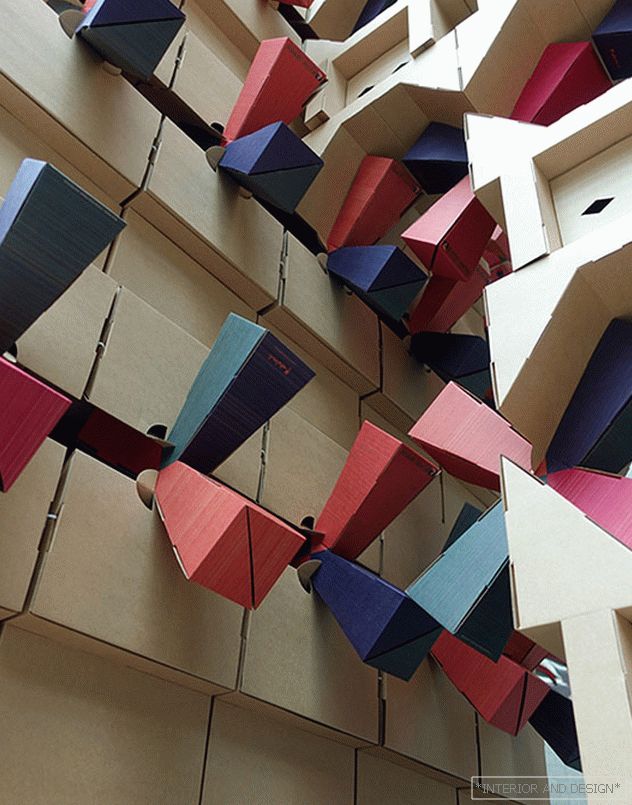The bright and original flower Phlox Drummond got its name in honor of its discoverer - the Scottish traveler Henry Drummond. Gardeners in this plant are attracted by ease of care, lack of demanding of soil and weather conditions, as well as minimal problems with seed germination. With proper care of the flower, he is able to transform a garden, a summer cottage or another territory.
Content
- 1 Brief description of the flower and its distinctive features
- 2 Advantages and disadvantages of Phlox Drummond
- 3 Varieties with photos
- 4 Landing Features
- 4.1 When to plant Drummond Phlox when grown from seed
- 4.2 Land preparation
- 4.3 Selection of seed
- 4.4 Step by step instructions for obtaining seedlings
- 4.5 Video on planting seeds to help a novice
- 5 Plant Care
- 5.1 Watering
- 5.2 Lighting
- 5.3 Fertilizers
- 5.4 Shelter for the winter
- 5.5 Video about the experience of growing and caring at home
- 6 Diseases and pests
- 7 How to grow a beautiful phlox Drummond: reviews practitioners
Brief description of the flower and its distinctive features
Phlox Drummond belongs to the category of annual plants. The height of each bush does not exceed 50 cm. A distinctive feature of this flower is abundant flowering. Inflorescences can be so much that they completely cover the green leaves. His shoots are fragile and thin, and the flowers are small. Among the range of varieties you can find almost any color option. Some species have inflorescences, painted simultaneously in several shades.
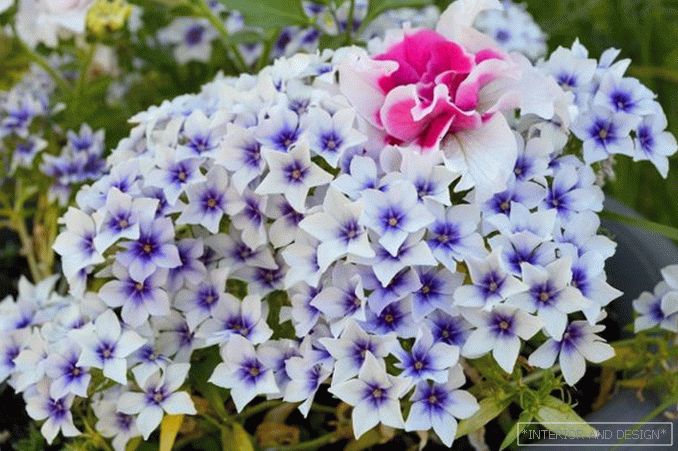
In the arsenal of this phlox a huge number of shades
Main characteristics:
- the flower always grows in the form of a bush;
- leaves are elongated, and their number is inferior inflorescences;
- inflorescences may resemble an umbrella or flap;
- petals can be oval, round, terry, pointed or “rugged”;
- the diameter of each inflorescence can reach 15 cm, and the flower - 2.5 cm;
- bush height - from 20 to 50 cm (there are special undersized varieties).
Advantages and disadvantages of Phlox Drummond
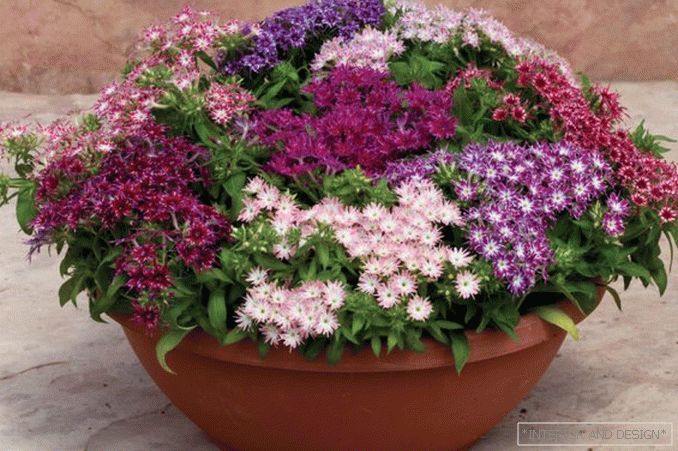
If you combine several different varieties of Drummond phlox in one composition, you will get a harmonious garden composition
This flower has a number of advantages over other annuals. The plant can be used to decorate flower beds, summer cottages and even balconies (in the form of pots or flowerpots).
The disadvantages of the flower include:
- special requirements for lighting,
- intolerance to excessive moisture.
For example, in the country it is sometimes difficult to find a plot with penumbra (but you can choose varieties with increased resistance to drought), and for plants with frequent rains, this plant is not suitable.
Advantages:
- a variety of shades of flowers (from white to a combination of several colors at the same time);
- possibility of self-sowing reproduction (seed boxes appear at the end of flowering at the place of flowers);
- it is enough to create simple conditions of maintenance, and the flower will delight with lush inflorescences;
- continuous flowering throughout the season until the first cold weather (the flower fades on the seventh day, but in its place a new one blooms immediately);
- during a drought, only the leaves can suffer (the plants themselves will not die and quickly recover);
- fertilizers can be used only a few times per season.
Varieties with photos
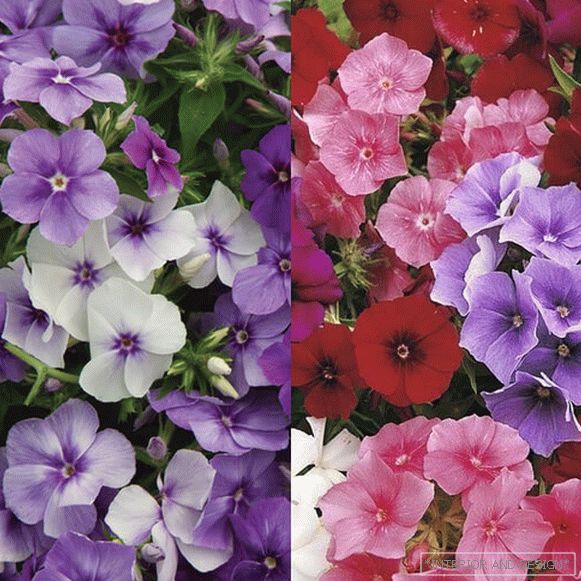
When choosing a variety, take into account the height of phloxes - it varies in each species and the range is very wide!
Different varieties differ in height bushes, flowering palette and other nuances. For example, among species there are species that are more resistant to cold or drought, have an unusual shape of branches or a unique color. Among the range of phloxes, you can find flowers with spherical buds or buds located on high legs. Some varieties are universal in planting, others are suitable only for certain areas.
- Promis (a variety of terry variety, the maximum height of the bush does not exceed 30 cm, flowers can be scarlet, purple, pink or blue, the most rare option is peach).
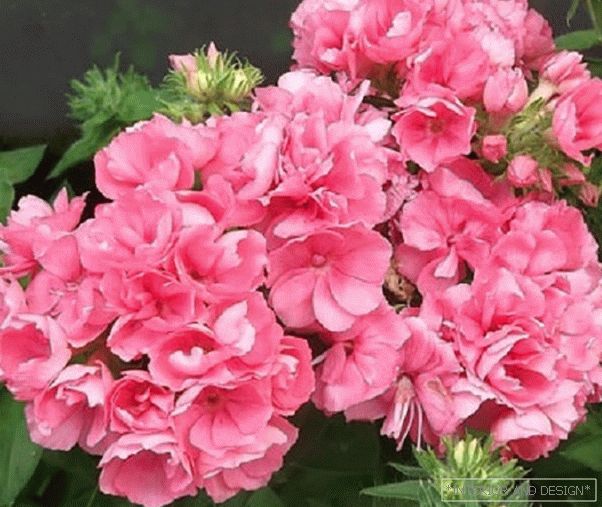
The variety Promis is well decorated with stony decorative slides
- Kaleidoscope (seeds are a mixture of plants with different shades, the base of the petal is always darkened, perhaps a combination of blue, purple and white, and crimson, crimson and scarlet).
- Terry (plants with double flowers can be undersized or tall, among the range of many options for shades).
- Buttons (a distinctive feature of the variety is the presence of pronounced branches, the flowers are often scarlet, pink or blue, the plant is drought tolerant and suitable for planting in the southern regions).
- Large-flowered tapestry (one of the highest varieties, the height of the bush reaches 45 cm, the edges of the flowers have a white border, the main shade of the petals is always rich and dark).
- An alluring star (the flowers resemble snowflakes, the variety is one of the lowest species, the flowering does not stop until the first cold weather begins).
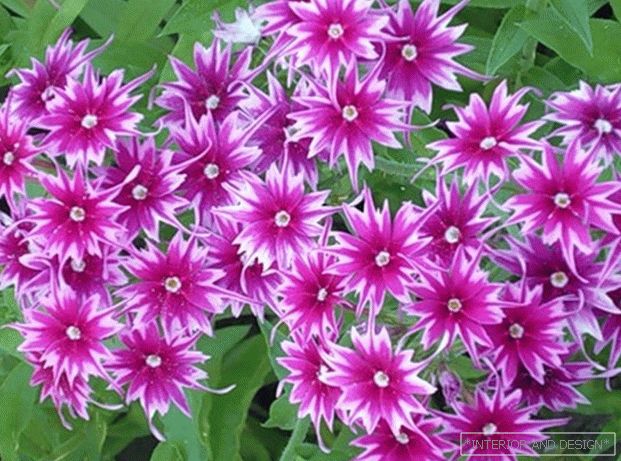
Alluring star will look spectacular when landscaping balconies
- Ethni (flowers can be terry or semi-double, the plant is short, the height of the bush reaches 15 cm, the palette of shades is delicate pastel, the feature is branching bushes).
- Fair mix (the flowers are bright, double or semi-double, all shades of red and pink, the height of the bush does not exceed 20 cm).
- Galaxy (tall plant, bush height up to 50 cm, flowers most often purple or different shades of blue, a feature - pointed petals and leaves).
- Star rain (this name has a mixture of several varieties, the height of annuals reaches 50 cm, the seed material includes plants with inflorescences of different shades).
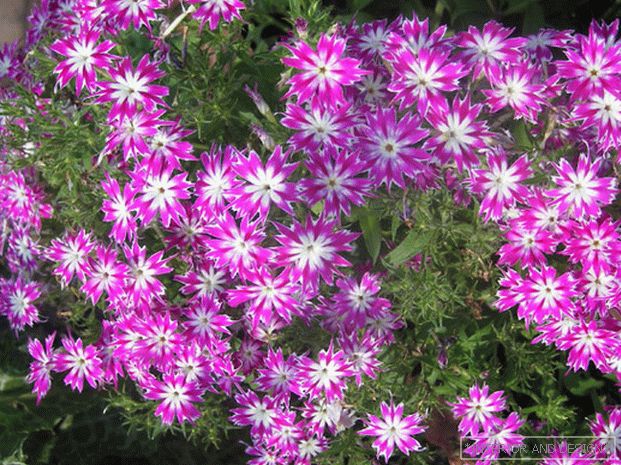
Star rain resistant to frost and drought
- Pretty woman in blue / white / crimson (varieties are most often used for framing flowerbeds or decorating borders, the plant blooms with large inflorescences whose hue corresponds to the name of the variety).
- Leopold (the only variety that has flowers of coral color, inflorescences up to 3 cm in diameter are placed on a high stem, the peculiarity is increased resistance to cold weather).
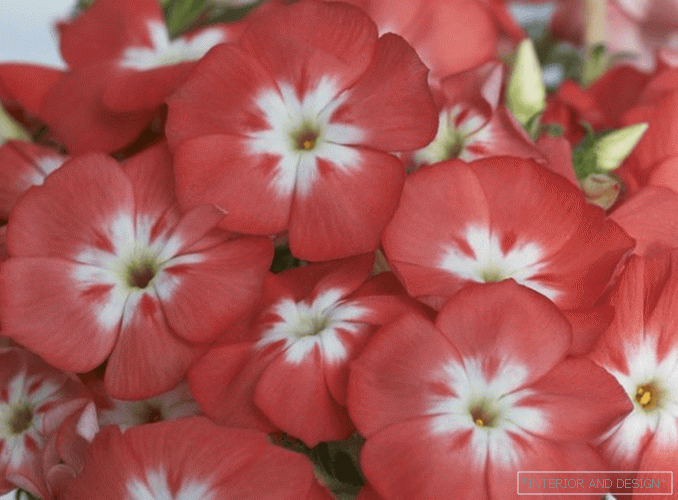
Leopold - a large-flowered variety with a bewitching scent
- Ferdinand (a plant with dense inflorescences, flowers of bright red color, height of a bush reaches 45 cm, feature - existence of pronounced aroma).
- Blue velvet (flowers are saturated blue, velvet petals, bush height does not exceed 30 cm, pointed leaves).

To blue velvet more abundantly bush, pinching over the fourth or fifth pair of leaves is recommended
- Scarlett (plant up to 25 cm tall, flowers can be double or semi-double, a palette of shades - from pink to rich scarlet).
- Vernissage (the maximum plant height reaches 40 cm, large flowers up to 2 cm in diameter, the presence of a dark base at the petals is acceptable, the palette of shades includes white, black and purple, red and other variants)
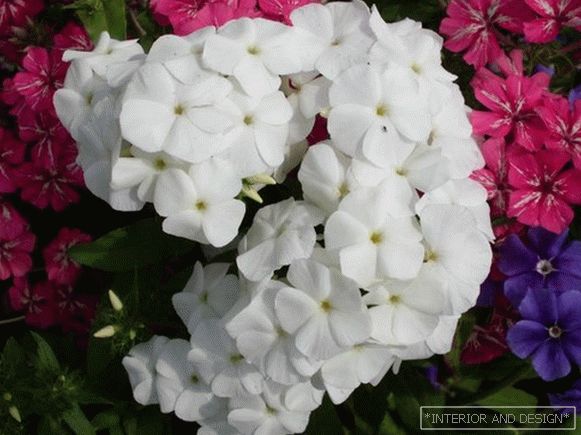
Opening day harmoniously looks on the balconies and garden vases
- The art of shadows (the highest representatives of the variety, the height of the bush can reach 70 cm, the palette includes almost all options, the diameter of one flower is up to 4 cm).
- Caramel (refers to the number of high representatives of the variety, there is a maroon or cherry stain at the base of the petal, the main shade is golden or caramel).
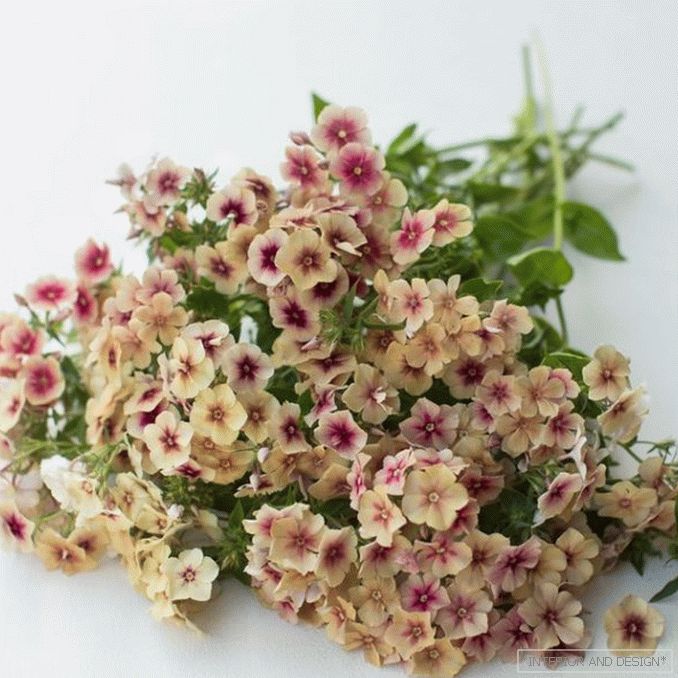
Delicate flowers Caramel suitable for decorating brighter and larger flowers in a bouquet
- Bird's milk (one of the smallest varieties, the height of the bush does not exceed 15 cm, the flowers are most often of vanilla or cream shade, petals with a terry border).
- Beauty (in the palette there are only white versions, the plant is short, the height does not exceed 20 cm).
- Cecilia (the bush has a spherical shape, the average plant height is 30 cm, the base of the petals is always darker than the main shade, the variants of flowers are pastel, blue, purple or pink).
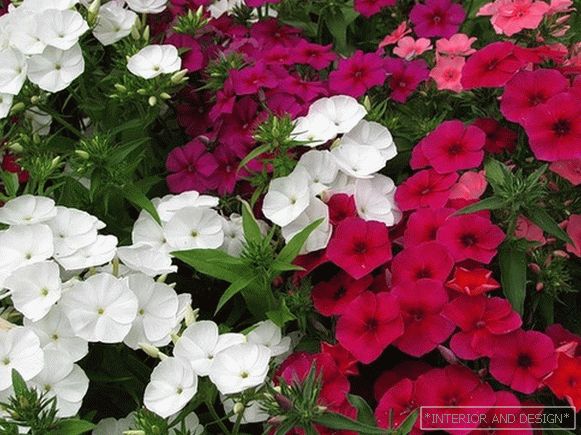
The seeds of Cecilia are planted in the soil no deeper than half a centimeter.
- Chanel (a feature of the variety is the presence of double flowers, the height of the bush does not exceed 25 cm).
Landing features
To grow a plant in two ways - seedling and seedless. In the second case, the seeds are placed in open ground without prior germination. This method facilitates the process of growing plants, but has some nuances. First, it is suitable only for regions with a warm climate. Secondly, flowering will begin later (approximately in the middle or at the end of summer). It can be planted with a seedling-free method at the end of April, if the climate is warm, or at the end of May with a long spring.
When to plant Drummond Phlox when grown from seed
The optimal time for sowing seeds is March. Planting grown plants should be carried out depending on the weather conditions in the region. For example, for warm regions and central Russia, May is considered a suitable period. If climatic conditions are more severe and differ in cold spring, then it is better to start sowing seeds in late March or early April.
Land preparation
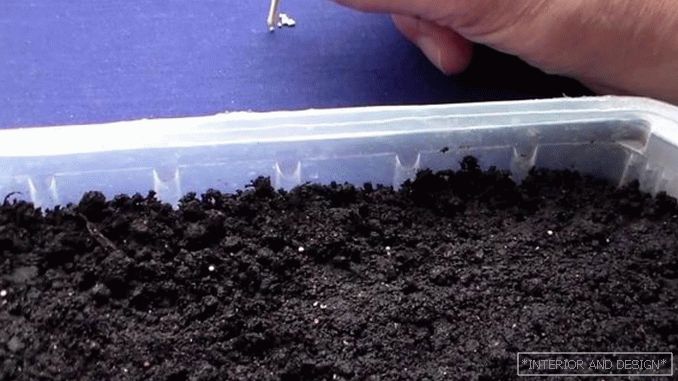
Phlox seeds are so small that it is better to use a toothpick or tweezers
Phlox requires a light but fertile soil with a low level of acidity. If the land is heavy in the selected area, then organic matter, sand and peat will help to improve its condition. Plants are planted in the hole, the distance between which should be at least 20 cm. During growth and flowering free space will be filled with foliage and inflorescences.
During planting, you can use a little trick. If the soil from the hole is mixed with wood ash, and then sprinkle it with a sapling, then this technique will help avoid various diseases and make the soil more nutritious.
Selection of seed
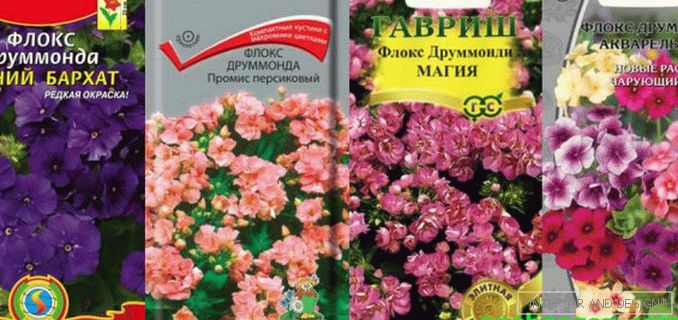
When choosing seeds, consider the climatic conditions of your region.
It is easy to get seed: you can buy seeds in specialized stores or collect it yourself. In July, peculiar globular shaped boxes form at the site of the inflorescences. To guarantee the germination of the collected seeds, it is necessary to wait for their full maturity.
Step by step instructions for obtaining seedlings
- Fill the seedling boxes with moist soil (it is desirable that the soil contains a mixture of mineral fertilizers, humus, sand, lime and peat in a 1: 1 ratio with the ground).
- Spread the seeds on the surface of the soil, slightly pressing them no more than 1 cm (you can not plant the seeds too deep, you may have problems with their germination).
- Planted seeds should be sprayed with warm water (in any convenient way).
- Cover the crates with cellophane and place them on the windowsill (the temperature should not exceed 20-23 degrees). When choosing a location for the distribution boxes, it is important to exclude drafts.
- Daily crops should be aired, and soil moisture should be carried out as the soil dries (it is desirable to use a spray bottle for the procedure).
- The seeds should germinate in about a week (after the sprout appears, cellophane can be removed).
- Watering seedlings should be carried out moderately (if the moisture is too much, then young plants will fall ill and die).
- It is possible to plant plants in separate pots after the appearance of the second leaf (at this stage it is recommended to pinch the seedlings so that the bushes will turn out later)
- Ten days after planting in separate containers, the plant can begin to be fertilized (the use of nitrogen fertilizers is an ideal option).
- It is necessary to accustom the plant to fresh air gradually (2 weeks before the intended planting in open ground, you can put pots on the balcony).
- It is possible to plant seedlings in open ground in May or at the end of April, depending on the weather conditions in the region.
- Previously, the site of planting phlox should be loosened and make the soil more nutritious with the help of any mineral fertilizers.
- The distance between the holes should be at least 15 cm (seedlings should be removed from the tank, carefully placed in the hole and sprinkled with earth).
- Immediately after transplanting, it is recommended to water young plants (the amount of moisture should be moderate).
- Growing phloxes involves the regular loosening of the ground at the base of the plants. This should be done carefully, because the root system of the flowers is weak, superficial and easy to damage.
- Faded inflorescences or dry leaves are removed (flowering will occur more actively).
Video on planting seeds to help the novice
Diseases and pests
Phlox Drummond differs quite strong immunity. The risk of plant infection increases with the presence of diseased plants (for example, those affected by typical garden pests). Excessive watering of bushes can provoke root rot or serious diseases. A weakened plant is most prone to infection and becomes vulnerable.
Variants of diseases and methods of treatment:
- bleeding dew (the main symptom of the disease is the presence of white on the leaves, resembling flour, the progression of the disease leads to the death of the damaged areas of the plant, you can get rid of the disease with a solution of fungicide, wood ash or dusting with activated carbon);
- aphid (characteristic spots show the presence of it on plants, the flower seems to dry parts, there is an active deformation of the leaves and stems, a solution to the problem is spraying with calendula decoction, covering the flowers with lemon or orange peel, and using special means Aktar);
- root rot (the cause of the disease is excessive soil moisture, the plant cannot be cured, it must be pulled out and thrown out, and the well treated with a solution of copper sulphate);
- trips (The main signs of infection are silver spots on leaves and stems, leading to plant deformation, the soil can be shed with Aktara solution or garlic and onion-based decoction. Damaged buds and leaves must be cut off);
- spider mite (on leaves and inflorescences a raid appears, resembling a fine web, you can use folk remedies to combat the disease - decoction of onions or garlic, but it is better to use Kleschevit or Actofit solutions).
How to grow a beautiful phlox Drummond: reviews practitioners
There is nothing difficult in caring for phloxics - timely watering, complex fertilizers, loosening the soil (very carefully, as they have a superficial root system!) And removal of flowering inflorescences. With this care, the plants will thank you to full bloom until the frost :)
I have them in my garden every year. And now one has already got out (planted on March 10). Sowed and right into the ground in spring - germinate, only bloom later. But in nature they germinate in the light, not in the dark.
Phlox is very susceptible to "powdery mildew" and if there is a carrier of this disease, and this is mainly oak and yellow acacia, then whatever means you treat the plant, it will never give you all the beauty of flowering. The powdery mildew does not only infect the leaves, but it penetrates deep into the root system and shows its symptoms only at the moment when the phloxes begin to open the buds. If the plant is in a large bush, then it will try to bloom, but at this time, powdery mildew damages the leaves. The bush stands all white and gray and there is no beauty
Stretched and collapsed - this, of course, their minus. But they have a lot of other advantages: they bloom continuously for the whole season. Carefully fade (for me it is important). Calmly dispense with dressings, and they need to be watered less often. Do not get sick, nobody eats them. I refused them this year - I replaced them with other annuals, and I really miss them.
Phlox Drummond can be planted alone or combined with other plants. High varieties look good as a blooming hedge. Low-growing varieties can decorate balconies, flower beds or other areas. The charm of such varieties allows you to successfully grow them in street pots or vases.

